one-pot herb garden
Learn how to set up and grow a one-pot herb garden that you can use to supply your kitchen with delicious fresh herbs all in one container. Garden containers work great for herbs, and they will help you make the most of the space you have, allowing you to grow more in confined areas.
Using containers to grow the food you love is a great gardening 101 tip that works for urban gardeners, anyone who is short on time, or folks with limited space.
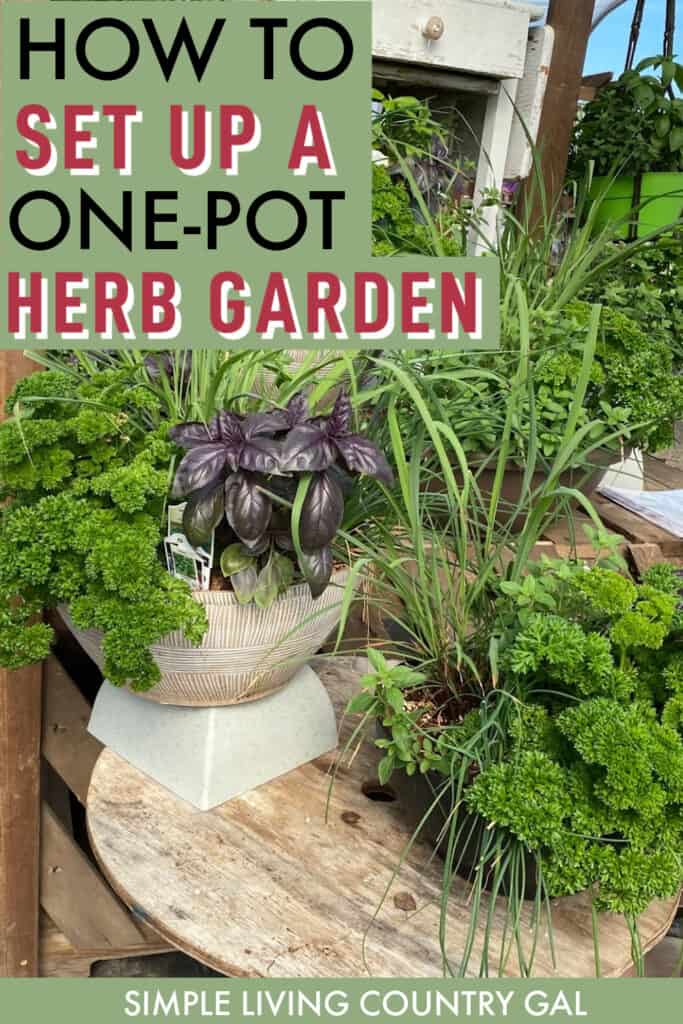
One-pot herb gardens are easy to set up and tuck around your home. They give you the value of a garden without needing a large area to grow in. They are great for growing collections of herbs together and can be set up both outside and inside your home.
I love having fresh herbs in my kitchen, and with a few tips, you, too, can have your favorites growing year-round. Use them to take every day meals and turn them into delicous dishes your family will come running in for.
How to Grow a One Pot Herb Garden
Growing a long-lasting herb garden depends on the container, so let’s begin there.
Choose the best Container
Choosing the right container is the first step and one you won’t want to skim over. The container you choose needs to be:
#1. The right size—You will want a container that gives enough room for your small plants to grow to full size without feeling crowded. This will limit having to transplant your garden into a bigger container.
#2. Easy to move—You’ll want to be sure you have a container you can move around after planting it. Too big will also mean too heavy and something to keep in mind as you may want to move your garden inside during the winter and back outside during the summer.
#3. Durable to last—Be sure to choose a container that will last so you can grow your garden for a year or even longer.
Drainage Matters
Having good drainage will help your plants to grow better and for them to be hardier. Look for a container made of a porous material like clay or wood.
You will also want to be sure it has enough drainage to allow the excess water to escape, giving roots a healthier environment to grow in. If the container does not have drainage you can add holes in the bottom by using a hammer and a large nail.
We love Grow Bags!
Relatively new to the gardening industry are these grow bags, and each year, more sizes and options are hitting the market.
Feitore Fabric Raised Garden Bed, 30 Gallon 4 Grids Square Garden Plant Grow Bags Breathable Planting Bags for Vegetables, Flowers Herb Garden Planter

I use them throughout our garden beds because they allow me to grow vegetables in open spaces, keeping things close and convenient to my home.
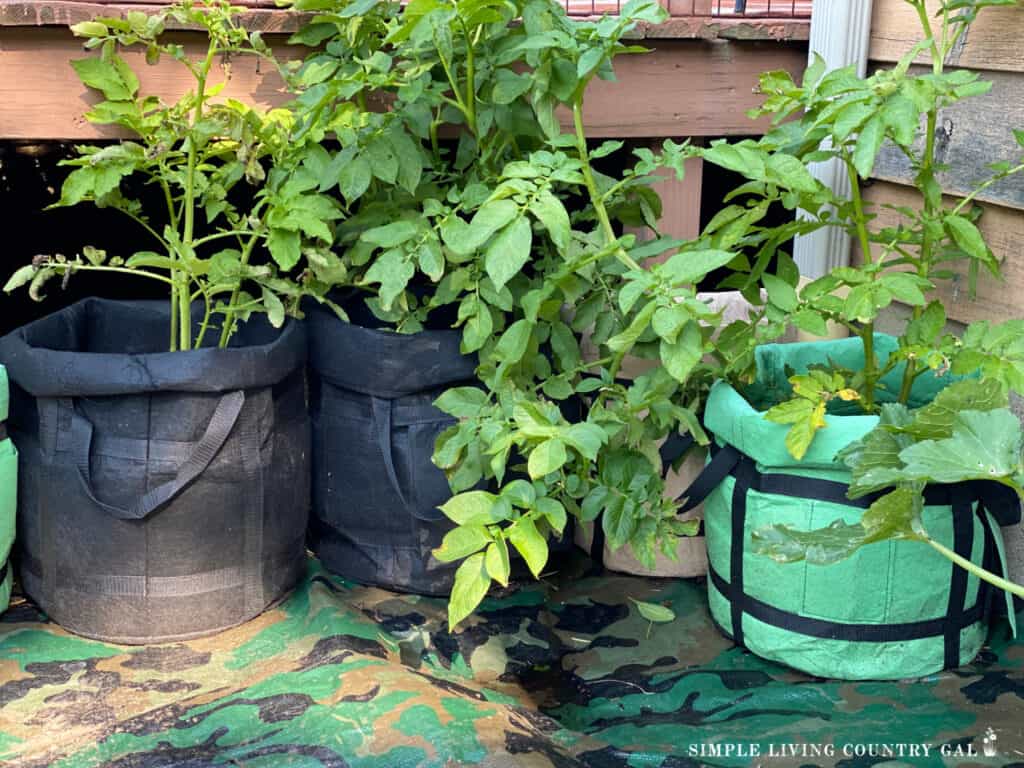
What size is best?
Your container should be at least 12 inches in diameter and 8-10 inches deep. This will give enough space for several herbs to grow comfortably together. Some herbs, like rosemary and lavender, have deeper root systems, while others, like thyme, are more shallow. If you choose to mix different root systems in one container, go deeper to ensure all your plants grow well.
The amount of space you need inside the container depends on the plants you choose to grow, but the key is to give them enough space to breathe and not become overcrowded.
Choose the best Location
When choosing a spot to put your herb garden that is outside, look for a space that gets at least 6-8 hours of sunlight.
A few ideas are:
- A balcony
- Windowsill
- A table on a patio
- A wide set of stairs – be sure to put the container off to one side so it doesn’t get kicked over.
- An area on a back deck
- Tucked in your flower bed
SLCG Pro Tip: Be aware of where you keep your herb gardens. Some spots might get too much sun or hard heavy winds, which can be too intense for the delicate nature of herbs.
If you find that the spot you chose initially gets a lot of hard winds, you can move your container to a better location. This is another benefit of growing in containers.
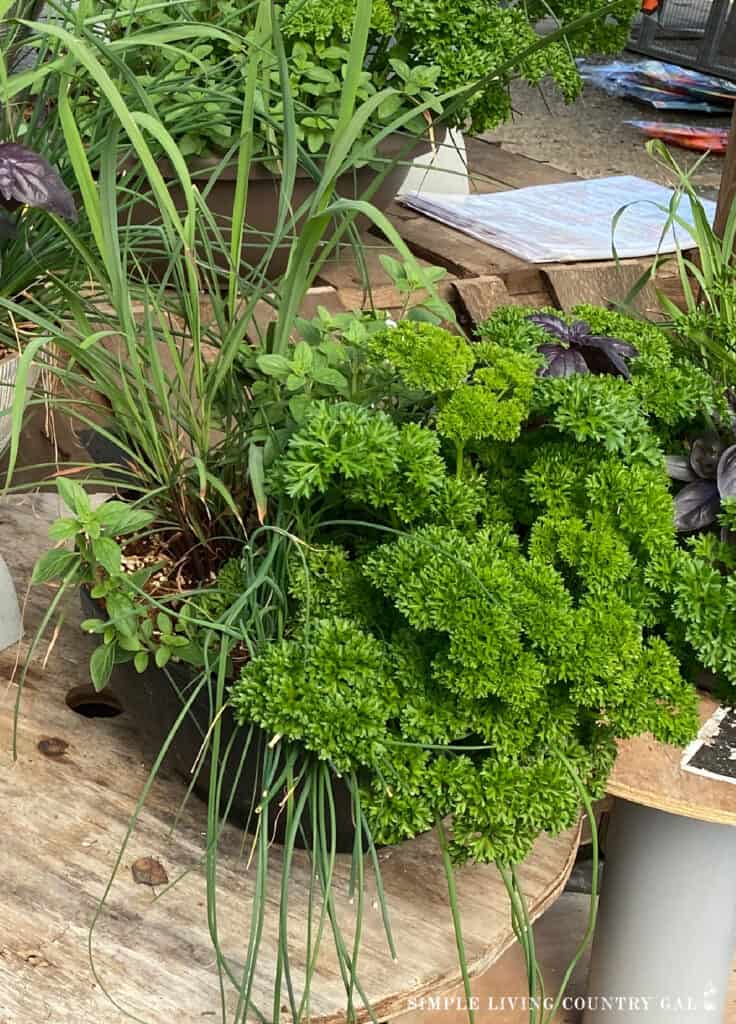
Essential Care Tips
There are a few things you will need to do routinely to ensure your on-pot herb gardening is growing a collection of healthy and vibrant plants.
#1. Sunlight
Outdoors
Herbs love sunlight, so look for a spot outside that receives about 6-8 hours a day.
Indoors
If you’re growing indoors, providing them with a grow light can help give enough light each day for ample growth.
LORDEM Grow Light, Full Spectrum LED Plant Light for Indoor Plants, Height Adjustable Growing Lamp with Auto On/Off Timer 4/8/12H, 4 Dimmable Brightness, Ideal for Small Plants, 2 Packs

#2. Water
Most herbs prefer drier soil, damp but not overly wet. You will also want to be sure you are watering consistently.
A good rule to follow is to water when the top inch of the soil is dry. There is a fine line to walk here; you want to be careful not to overwater because it can damage herb plants quickly and you will need to water frequently because container plants dry out more quickly than those planted in the ground.
Create a watering routine that you can stick with. I like to check the soil each morning by sticking my finder in about 1/2 deep to see what the moisture is. If it is dry, I can water; if it is wet, I can skip that plant and move on to the next one.
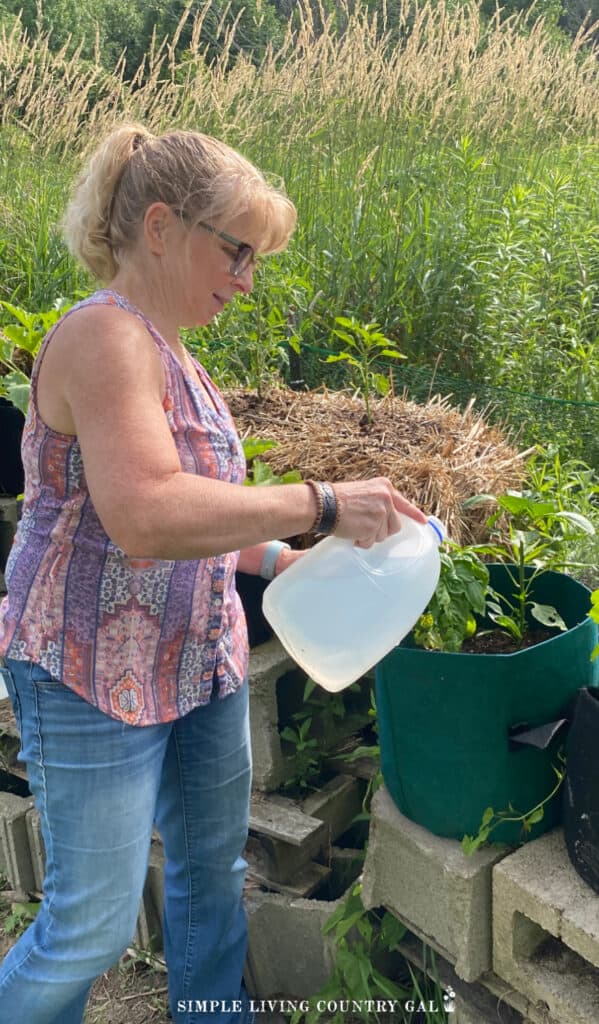
#3. Mulch
Mulching helps retain moisture, keep the soil cool, and suppress weeds. You can use organic mulch like dried leaves or straw. I prefer to use cut grass and will add a layer to my containers to help with the moisture levels.
Just know that mulch is good but not necessary for growing healthy herbs.
#4. Fertilizing
Herbs are light feeders, so a half-strength fertilizer once a month is all you need. You can use a balanced liquid fertilizer. Be sure you are not over-fertilizing, as it can alter the flavor of the herbs.
Square Foot Garden Planner+Guide

Companion Planting
Companion planting is a gardening technique that pairs plants together to encourage healthier and more vibrant growth. When it comes to herbs, you will want to know which do well near each other and which will negatively affect growth.
Here are a few partners to use and a few to avoid.
- Good Companions: Basil, parsley, and cilantro can all grow happily together, as they have similar water and sunlight needs and can be harvested regularly.
- Bad Companions: Keep mint separate from other herbs as its roots tend to spread and it can become invasive.
READ: Best Herbs for Companion Planting
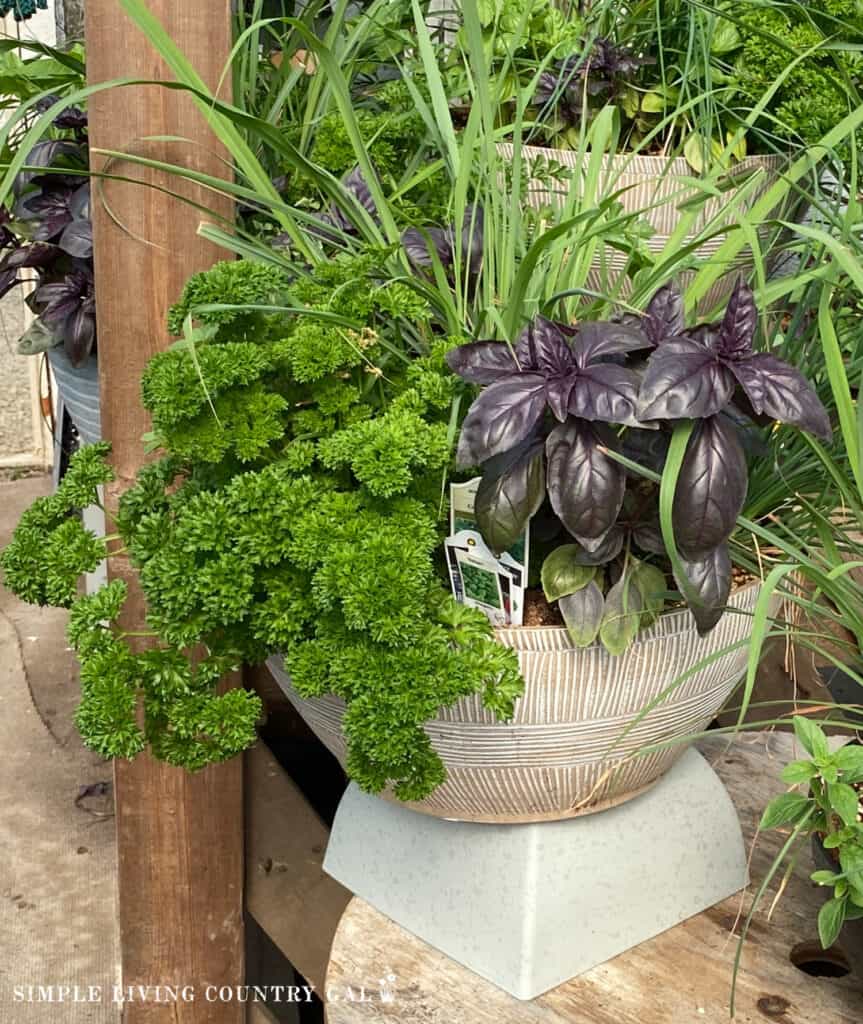
Tips for better growing
There are a few things you can do to grow more vibrant and healthy herbs.
#1. Pruning
Regular pruning encourages better growth and a more abundant harvest. Clip leaves at the stem and never remove more than a third of the plant at a time.
#2. Regular Harvesting
Harvest herbs in the morning when the oils are most concentrated. Regular harvesting also encourages growth and prevents the plant from getting leggy or going to seed too quickly.

#3. Troubleshooting
Keep an eye out for signs of pests or disease. Isolate affected plants and treat them accordingly to prevent the issue from spreading. Neem oil can be used as a natural remedy for common pests.
Setting up and growing a one-pot herb garden is a great way to enjoy growing your own food without having to set up a full backyard garden setup. Start a few this year and tuck them around your home, giving a bit of natural decoration to your outside areas.










What a great idea. I love the idea of bringing them in after the season is done.
Yes!
Do whatever you can to keep those plants growing!
Thank you I need to show this to my daughter and SIL as they may be able to plant and grow some herbs for the household.
I visited you via Homestead Blog Hop 487
My links: 22+23. We will be delighted if you share your blog post links with us at SSPS. Link under BLOGGING